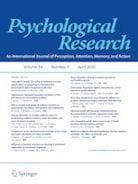A study by Prof. Ming YAN and his colleagues on perceptual span and individual difference during the reading of Tibetan sentences has been recently published in Psychological Research.
When reading sentences and images, people can only obtain useful visual information from a very narrow region around their current fixation location. This region of effective visual field per fixation is termed as the perceptual span. The size of the perceptual span is determined by a number of factors, including linguistic properties of the script and individual difference in reading ability. For instance, adult English readers can obtain useful visual information from an area covering 4 letters leftward and 15 letters rightward of the current fixation, whereas due to high information density and lack of inter-word spacing, Chinese adults have a physically smaller perceptual span covering 1 character leftward and up to 4 characters rightward of the current fixation.
The study aimed to determine the perceptual span for a unique and relatively unknown alphabetic writing system, Tibetan script. As the first psychophysical experiment during the natural reading of Tibetan sentences, the study reported that native Tibetan readers’ oculomotor activity and reading speed reached asymptotic performance, when gaze-contingently viewing three letter spaces to the left and seven or eight to the right of the currently fixated one. The results suggest that information density of a writing system influences the perceptual span during reading.
Psychological Research was established in 1921 as under the name “Psychologische Forschung”. It publishes articles that contribute to a basic understanding of human perception, attention, memory and action. As a Q1 journal in PSYCHOLOGY, EXPERIMENTAL (SSCI), it has an impact factor of 2.855 (2018 Journal Citation Reports).
Reference:
Wang, A., Yan, M. *, Wang, B., Jia, G., & Inhoff, A.W. (2020). The perceptual span in Tibetan reading. Psychological Research. doi: 10.1007/s00426-020-01313-4



